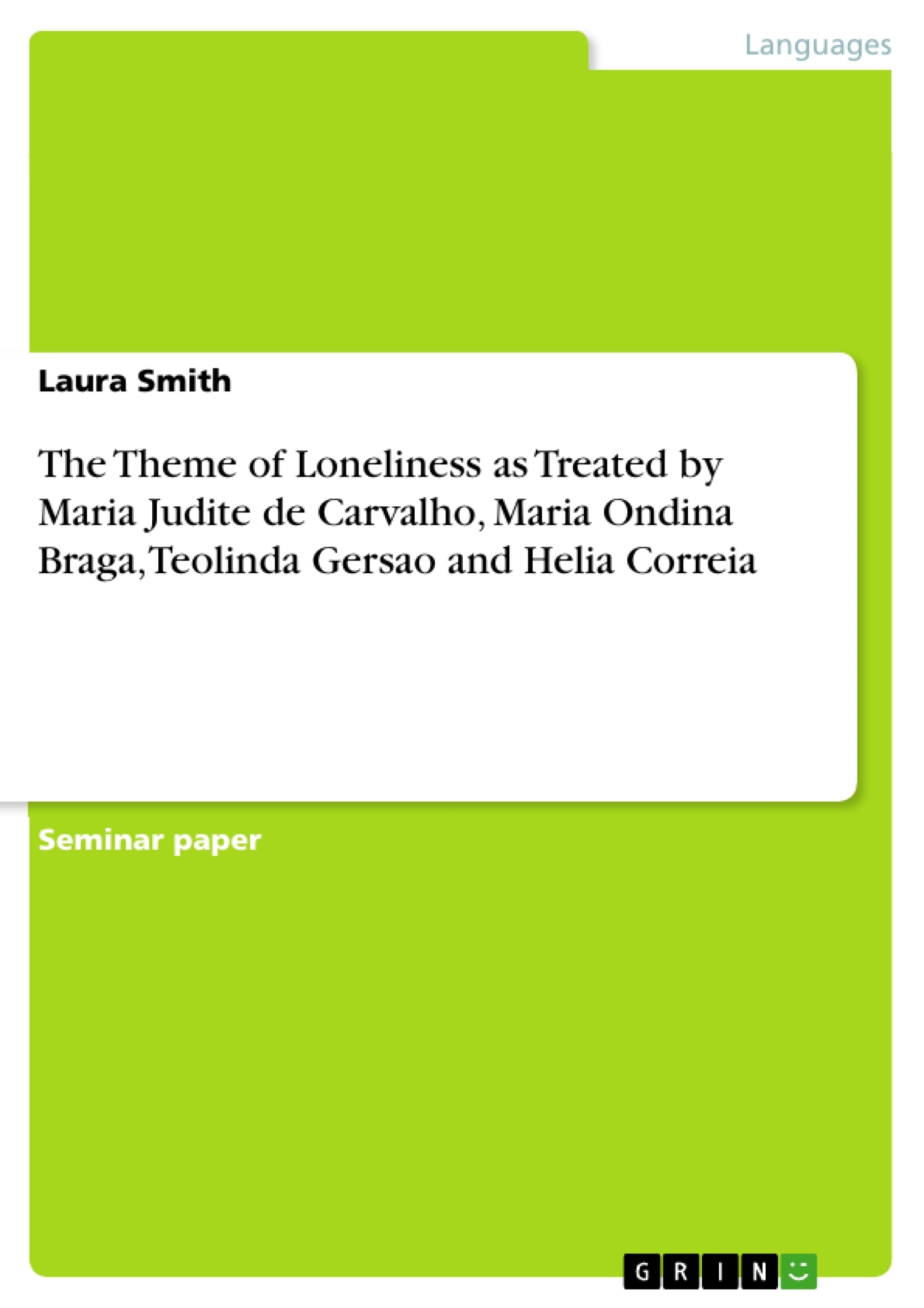Loneliness is a major health concern, a debilitating condition and a universal human emotion. It at once fascinates and terrifies us, which makes it an invaluable literary theme. The lonely and the elderly are often synonymous; Portuguese authors known for their short stories, such as those above, invariably include among their works an ‘old woman’ story in some form. The theme of loneliness comes as part of the package. The ways in which the narrative incorporates it, however, are as varied as the narratives themselves.
Inhaltsverzeichnis (Table of Contents)
- Loneliness as a Literary Theme
- Maria Judite de Carvalho: Mariana in Tanta Gente, Mariana
- The Ironic Title and the Theme of Solitude
- Mariana's Suffering and the Criticisms of Portuguese Society
- The Narrative Structure and the Circular Nature of the Story
- Maria Judite de Carvalho: The Inconsolable Fiancée
- The Banality of Loneliness and the Injustices of Portuguese Society
- Carvalho's Subtle Criticisms and the Reduction of Women
- Maria Ondina Braga: The Woman Who Wanted to Die
- Cremilde's Loneliness and her Desire to Leave a Mark
- The Moment of Epiphany and the Importance of Living
- Teolinda Gersão: The Old Lady
- The Old Lady's Loneliness and the Criticisms of Portuguese Society
- The Dream Sequence and the Ambiguity of Reality
- Hélia Correia: The Old Woman
- The Old Woman's Regression and the Role of Nature
Zielsetzung und Themenschwerpunkte (Objectives and Key Themes)
This text explores the theme of loneliness in the works of four Portuguese authors: Maria Judite de Carvalho, Maria Ondina Braga, Teolinda Gersão, and Hélia Correia. The text examines how each author portrays loneliness in their stories, highlighting the social, psychological, and existential dimensions of this universal human emotion.
- Loneliness as a universal human experience
- The portrayal of loneliness in the context of aging and social isolation
- The role of gender and social prejudice in shaping experiences of loneliness
- The use of narrative structure and literary techniques to convey the complexities of loneliness
- The relationship between loneliness and social critique in Portuguese literature
Zusammenfassung der Kapitel (Chapter Summaries)
The text begins by introducing the theme of loneliness as a major health concern and a universal human emotion. It then focuses on the works of Maria Judite de Carvalho, examining her portrayal of loneliness in the stories "Tanta Gente, Mariana" and "The Inconsolable Fiancée." In "Tanta Gente, Mariana," the protagonist, Mariana, is a young woman who experiences loneliness due to social prejudice and the abandonment of her husband. The text highlights the social criticisms implicit in Carvalho's work, particularly her critique of the attitudes of men towards women in Portuguese society. The text also examines the narrative structure of the story, which shifts between past and present, creating a fragmented and circular narrative that emphasizes the protagonist's existential drama.
The text then moves on to "The Inconsolable Fiancée," where the protagonist, Joana, experiences loneliness following the loss of her fiancé. The text explores the banality of Joana's loneliness and the way in which society views her with pity rather than understanding. The text also highlights Carvalho's subtle critiques of social norms and the reduction of women to extensions of their husbands.
The text then examines the work of Maria Ondina Braga in her story "The Woman Who Wanted to Die." The protagonist, Cremilde, is an elderly woman who is desperately lonely and seeks the help of a kind young woman named Amelia. The text explores Cremilde's desire to leave an impression on someone before she dies and the way in which she finds a sense of connection with Amelia. The text also highlights the moment of epiphany in the story, which emphasizes the importance of living and taking risks.
The text concludes its analysis with the stories of Teolinda Gersão and Hélia Correia. Gersão's "The Old Lady" presents a portrait of an elderly woman who lives in poverty and is isolated from her family. The text examines the dream sequence in the story and its ambiguity, leaving the reader to interpret the nature of reality and the old lady's ultimate fate.
Correia's "The Old Woman" explores the physical and psychological regression of an elderly woman who has been abandoned by her family. The text highlights the role of nature in the story and the way in which it serves as a metaphor for the old woman's loneliness and isolation.
Schlüsselwörter (Keywords)
The primary keywords and focus topics of this text include loneliness, social isolation, aging, gender, social prejudice, narrative structure, literary techniques, social critique, Portuguese literature, and the works of Maria Judite de Carvalho, Maria Ondina Braga, Teolinda Gersão, and Hélia Correia.
- Quote paper
- Laura Smith (Author), 2012, The Theme of Loneliness as Treated by Maria Judite de Carvalho, Maria Ondina Braga, Teolinda Gersao and Helia Correia, Munich, GRIN Verlag, https://www.grin.com/document/295715



